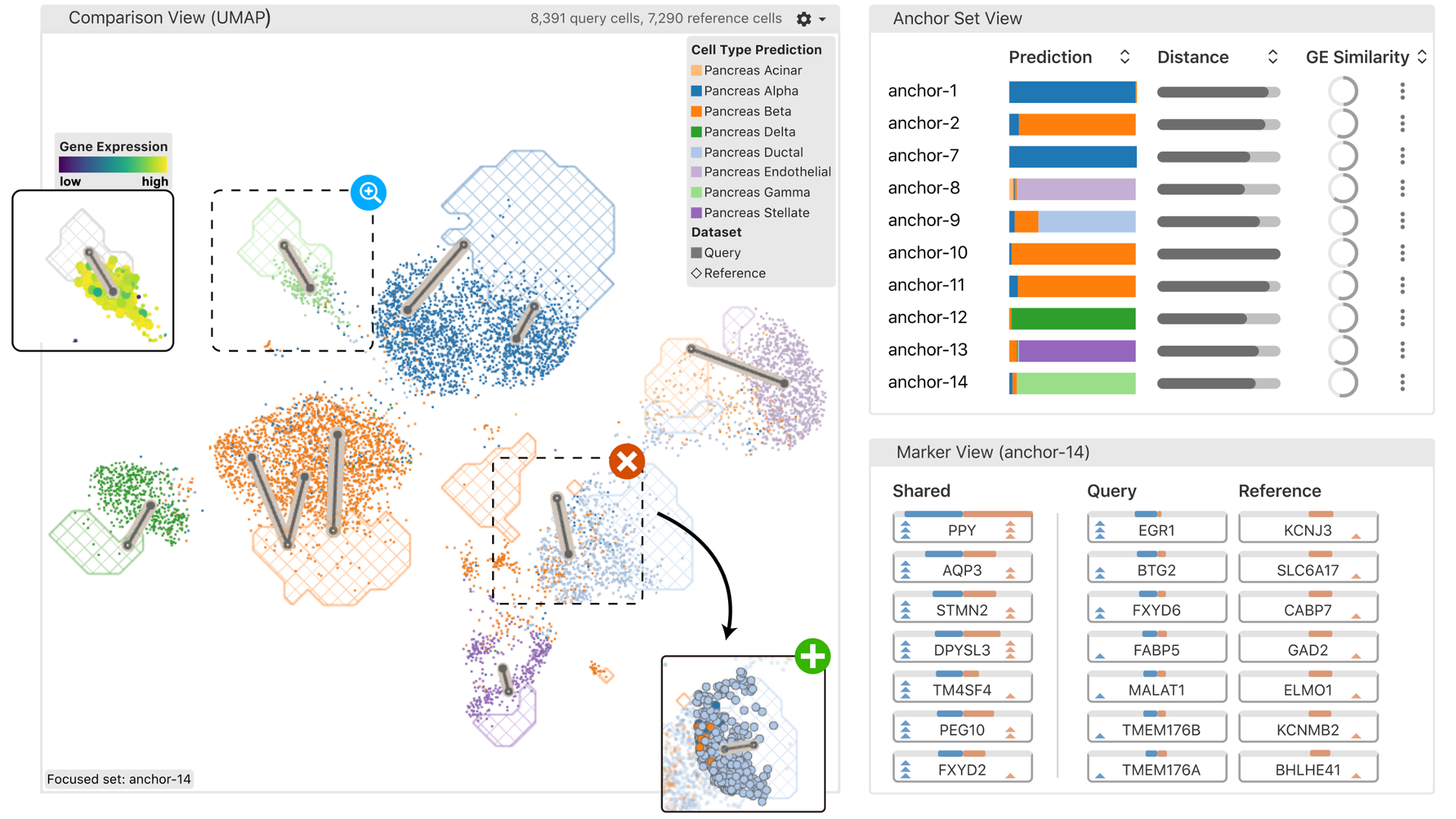Polyphony: an Interactive Transfer Learning Framework for Single-Cell Data Analysis
Furui Cheng, Mark S Keller, Huamin Qu, Nils Gehlenborg, Qianwen Wang
View presentation:2022-10-19T21:45:00ZGMT-0600Change your timezone on the schedule page
2022-10-19T21:45:00Z

Prerecorded Talk
The live footage of the talk, including the Q&A, can be viewed on the session page, DNA/Genome and Molecular Data/Vis.
Fast forward
Abstract
Reference-based cell-type annotation can significantly reduce time and effort in single-cell analysis by transferring labels from a previously-annotated dataset to a new dataset. However, label transfer by end-to-end computational methods is challenging due to the entanglement of technical (e.g., from different sequencing batches or techniques) and biological (e.g., from different cellular microenvironments) variations, only the first of which must be removed. To address this issue, we propose Polyphony, an interactive transfer learning (ITL) framework, to complement biologists' knowledge with advanced computational methods. Polyphony is motivated and guided by domain experts' needs for a controllable, interactive, and algorithm-assisted annotation process, identified through interviews with seven biologists. We introduce anchors, i.e., analogous cell populations across datasets, as a paradigm to explain the computational process and collect user feedback for model improvement. We further design a set of visualizations and interactions to empower users to add, delete, or modify anchors, resulting in refined cell type annotations. The effectiveness of this approach is demonstrated through quantitative experiments, two hypothetical use cases, and interviews with two biologists. The results show that our anchor-based ITL method takes advantage of both human and machine intelligence in annotating massive single-cell datasets.